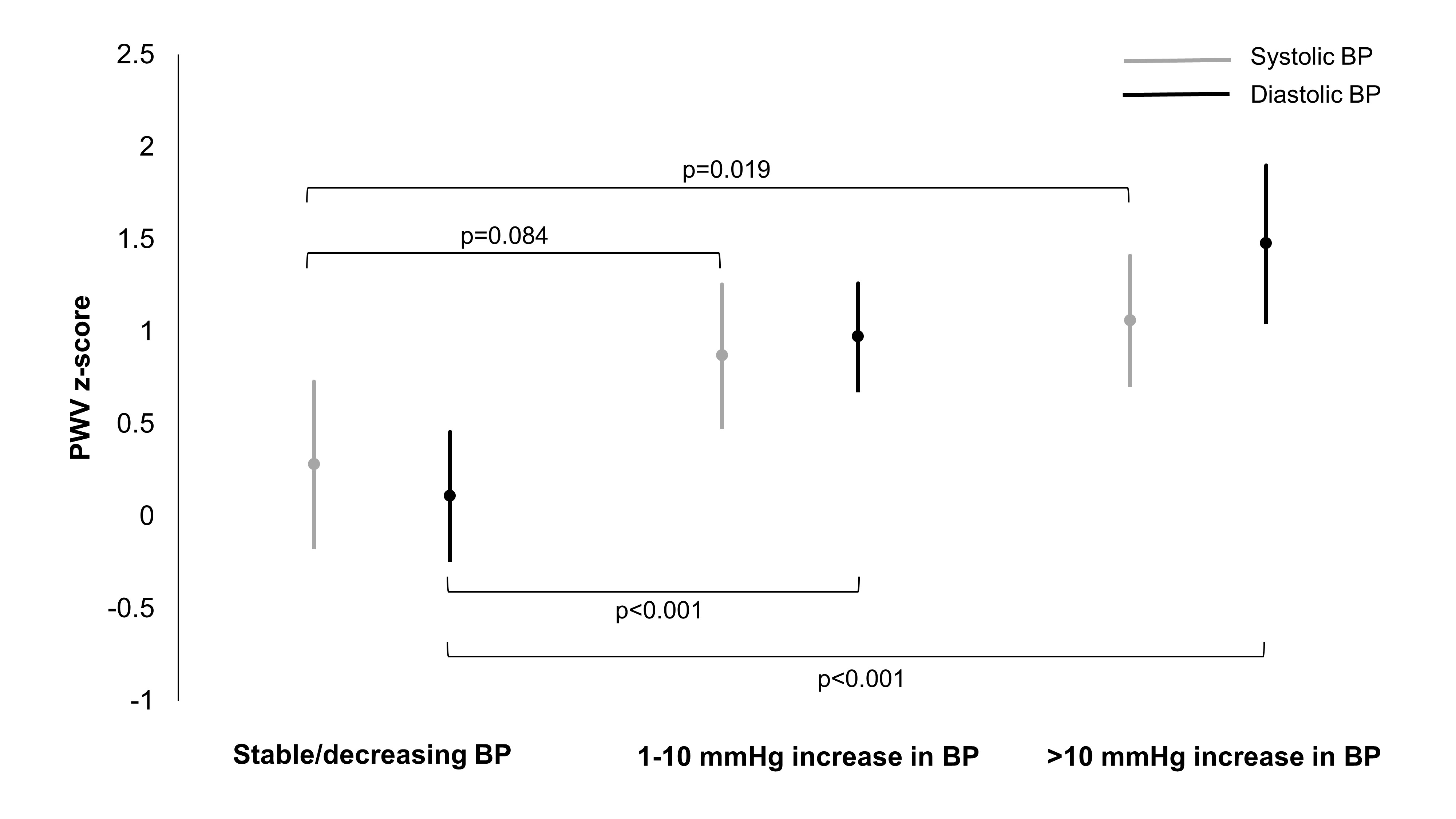
Arterial stiffness and changes in blood pressure: longitudinal analyses in pediatric kidney transplant recipients
Rizky Sugianto1, Karen Ostendorf1, Elena Bauer1, Jeannine von der Born1, Jun Oh2, Markus J. Kemper3, Rainer Buescher4, Bernhard M. W. Schmidt5, Nima Memaran1, Anette Melk1.
1Department of Pediatric Kidney, Liver and Metabolic Diseases, Hannover Medical School, Hannover, Germany; 2University Children’s Hospital, University Medical Center-Hamburg-Eppendorf, Hamburg, Germany; 3Department of Pediatrics and Adolescent Medicine, Asklepios Hospital Nord-Heidberg, Hamburg, Germany; 4University Children’s Hospital, Essen University Hospital, Essen, Germany; 5Department of Nephrology and Hypertension, Hannover Medical School, Hannover, Germany
Background: Cardiovascular events account for 25% of deaths in children undergoing kidney transplantation (KTx). In KTx population, mortality due to cardiovascular causes is even higher than due to non-functioning graft. Pulse wave velocity (PWV), a measure of arterial stiffness, is highly predictive of major cardiovascular events and mortality. While a strong dependency between PWV and blood pressure (BP) is established, the effect of dynamic BP change on PWV has not been explored. We aimed to determine to which extent BP changes contribute to an increase in arterial stiffness, and secondly, to evaluate the importance of immunosuppression on BP in children after KTx.
Methods: We included 70 children (n=43 males) from a longitudinal prospective study with biannual visits at three German pediatric nephrology units (Essen, Hamburg-Eppendorf, Hannover). All participants were ≥2.5 years post-transplantation with at least two PWV measurements. Changes of systolic (ΔSBP) and diastolic BP (ΔDBP) from the baseline values were classified into “stable/decreasing”, “1-10mmHg increase”, and “>10mmHg increase”. Linear mixed models for PWV z-score (PWVz) adjusted either for ΔSBP or ΔDBP were performed. Extended analyses were performed for SBP and DBP z-scores in a dataset with monthly entries of BP, immunosuppression, and creatinine from 35 children (n=20 males, median follow-up of 74 months, person-visits n=2137).
Results: PWVz was increasing with a rate of 0.11 z-score/year (p<0.001). Compared to children with stable BP, those with 1-10mmHg SBP or DBP increase showed a higher PWVz of 0.59 (p=0.034) or 0.86 (p<0.001), respectively. A >10mmHg BP increase was associated with an even higher PWVz (SBP β=0.78, p=0.007; DBP β=1.37, p<0.001). Female sex and lower eGFR were associated with higher PWVz. Figure 1 shows the corrected means of PWVz differentiated by categories of BP changes i.e. ΔSBP and ΔDBP, adjusted for each respective model. In the extended analyses, we did not find associations between immunosuppressive trough levels and SBP z-scores, but cyclosporin A and everolimus trough levels were positively associated with DBP z-scores.

Conclusion: Greater arterial stiffness is seen in patients with larger BP increases and higher immusuppressive trough levels are associated with higher DBP. This emphasizes the role of BP as modifiable risk factor for the improvement of cardiovascular outcome after transplantation.
This study has been made possible by grants of the German Federal Ministry of Education and Research through the Integrated Research and Treatment Center for Transplantation (reference number: 01EO0802) and the Roche Organ Transplantation Research Foundation.

right-click to download
